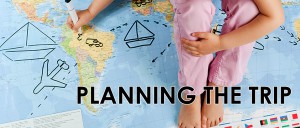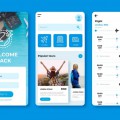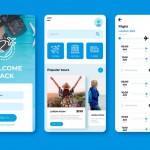Why Online Travel Planning Apps Fail
— March 31, 2015
Travel apps often fail because they overlook the practical needs of their users. Many apps focus on providing raw data about transportation options but fail to offer meaningful integration that aligns with a user’s specific requirements. For instance, when booking a business trip, the traveler typically knows the starting point, destination, and required arrival time. However, existing platforms like Skyscanner prioritize information about flights and airports, ignoring critical details such as the total time needed to reach a meeting on time. This oversight is a fundamental shortcoming that hinders user satisfaction.
A functional travel app should prioritize delivering seamless information about various transport modes while considering time, cost, and convenience. For example, if a business traveler needs to get to a meeting in London, they are faced with multiple airport choices, each offering varying degrees of convenience depending on location and onward transportation options. The traveler does not necessarily care about the mode of travel—whether by plane, train, or car—but rather whether the chosen option ensures they arrive at their meeting promptly. This failure to connect different segments of a journey represents a significant gap in current travel app offerings.
Addressing Transportation Integration
At the departure point, users require information about how to reach the airport or station efficiently. Options may include driving and parking, hiring a taxi, or taking public transport. Each option comes with specific considerations: public transport may not operate during certain hours, taxis incur per-journey costs, and parking fees accumulate daily. A travel app should present these options clearly, sorted by cost and convenience, ensuring users can make an informed choice with minimal effort.
The same principle applies to the traveler’s arrival. After reaching their destination airport or station, they need a clear understanding of onward travel options to reach their meeting venue. These details—such as the time needed for airport transfers, the reliability of connections, and costs—are often absent in current travel planning apps. This lack of comprehensive planning tools forces users to piece together their travel arrangements manually, which is time-consuming and frustrating.
A user-centric travel app would integrate all these elements. It would calculate the total journey time from departure to arrival and present travel options in a cohesive format. By focusing on user needs—such as ensuring timely arrival at a meeting and optimizing costs—apps can provide real value and distinguish themselves in a competitive market.
A Unified Approach to User Needs
The ultimate goal of travel planning is to make the process as simple and efficient as possible. A well-designed app should address the fundamental user need: ensuring the traveler reaches their destination on time while presenting all feasible options based on cost, time, and convenience. This approach requires integrating data from airlines, railways, taxi services, and public transport systems into a single platform. By doing so, the app removes the burden of manual coordination from the user.
For example, a business traveler attending a meeting in Vietnam would benefit from an app that outlines the best flights to Ho Chi Minh City, includes estimates for transfer times from the airport, and calculates the total cost of each route. Incorporating real-time updates on delays or changes further enhances the user experience. This comprehensive approach not only ensures punctuality but also helps users make cost-effective decisions without sacrificing convenience.
The concept of presenting options for returning home after the meeting is equally important. Users should be able to input the desired time for arriving home, and the app should suggest the best travel routes, considering factors such as delays, traffic, and available transport modes. When travel apps fulfill these expectations, they reduce user stress and build trust in their service.
The Emotional Factor in Travel Planning
Travel planning involves more than functionality; emotions play a crucial role in the user experience. A successful app must prioritize customer satisfaction by addressing emotional needs such as feeling valued, supported, and inspired. A seamless experience fosters positive emotions, encouraging users to return to the platform for future travel planning.
For instance, an app that simplifies complex travel arrangements makes users feel empowered. They no longer need to worry about missing connections or overpaying for transport. Instead, they can focus on their journey, confident that the app has covered every detail. These positive emotions translate into customer loyalty, which is essential for long-term success in the travel industry.
Conversely, apps that fail to meet user expectations—whether through incomplete information or clunky interfaces—elicit frustration. Users are likely to abandon such platforms and share negative feedback, potentially harming the app’s reputation. By placing emotional considerations at the forefront of development, travel apps can ensure a harmonious balance between functionality and user satisfaction.
The Future of Integrated Travel Solutions
The disjointed nature of current travel planning tools is not sustainable. As technology advances, the industry will inevitably shift toward fully integrated platforms that address the entire travel journey. Future apps will not merely provide isolated pieces of information but will offer a holistic solution that connects every aspect of the journey, from departure to return.
When travel apps prioritize user needs, they not only enhance functionality but also deliver a superior experience that resonates with users. Developers should focus on creating intuitive systems that combine practical planning tools with a user-friendly interface. This approach will inspire confidence and foster emotional connections, ensuring the app’s success in an increasingly competitive market.
Companies specializing in outsourcing app development, such as S3Corp., have a unique opportunity to lead this transformation. By leveraging expertise in web and mobile app development, these companies can create travel solutions that meet modern user expectations. Vietnam, with its growing tech industry, is well-positioned to contribute innovative solutions to the global market. This combination of technical expertise and user-focused design is the key to overcoming the shortcomings of current travel planning apps.
Ultimately, by addressing these gaps, the industry can create travel tools that not only meet functional needs but also provide an enjoyable and stress-free experience, ensuring their place as indispensable resources for travelers.









